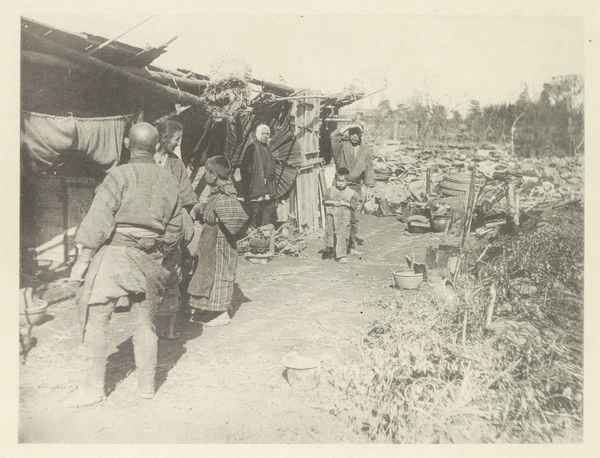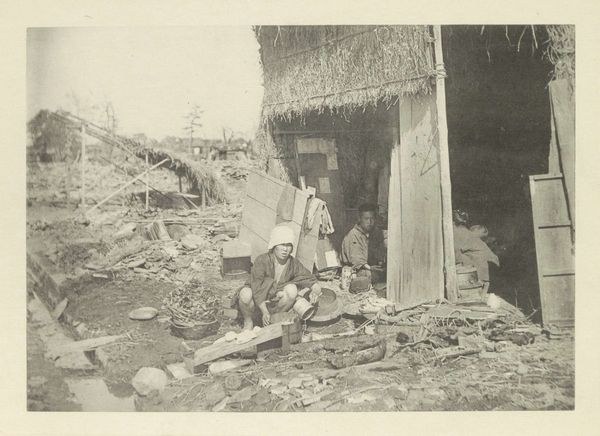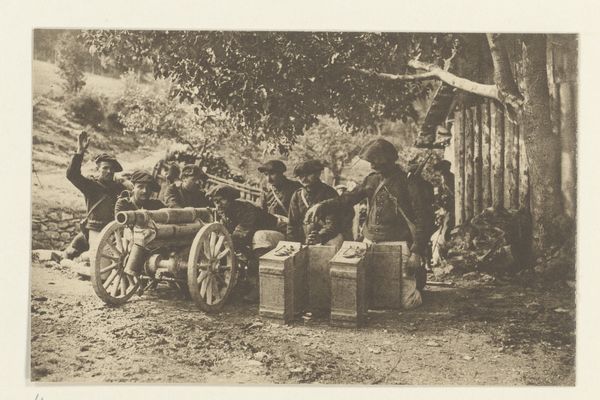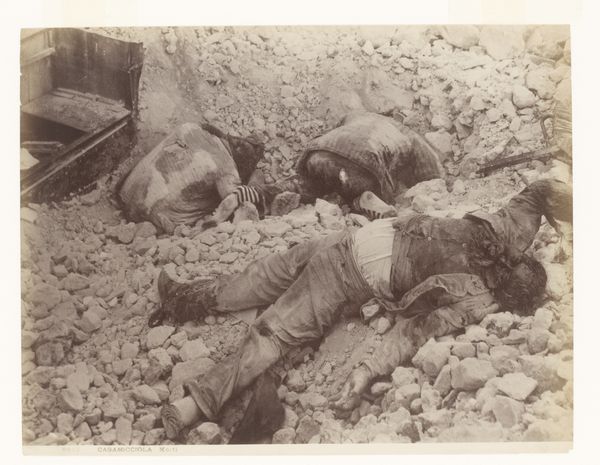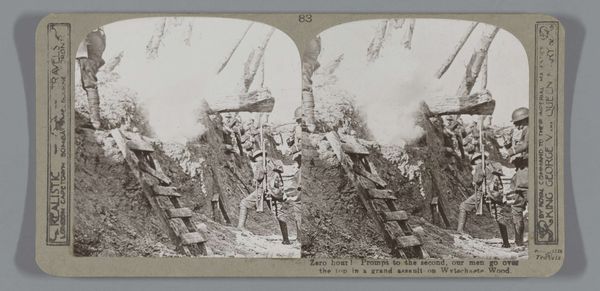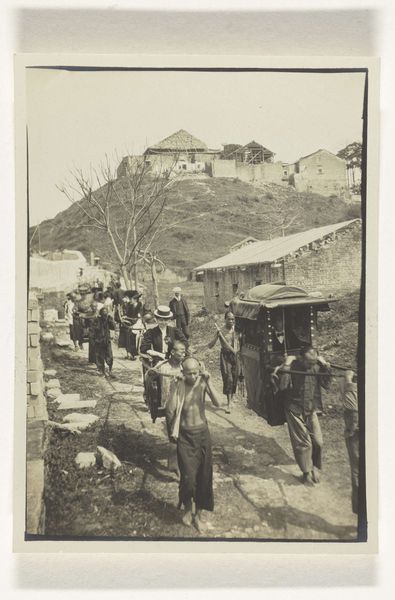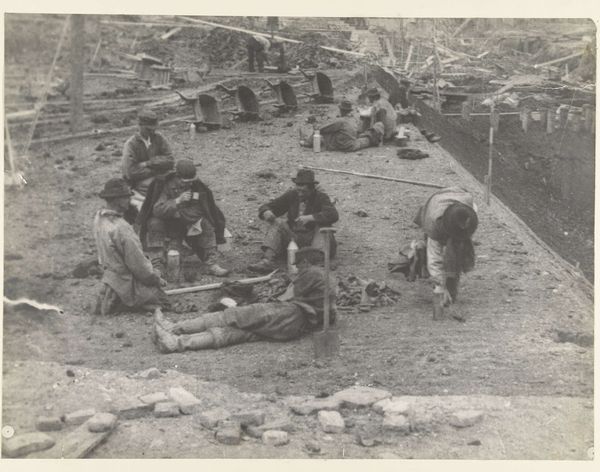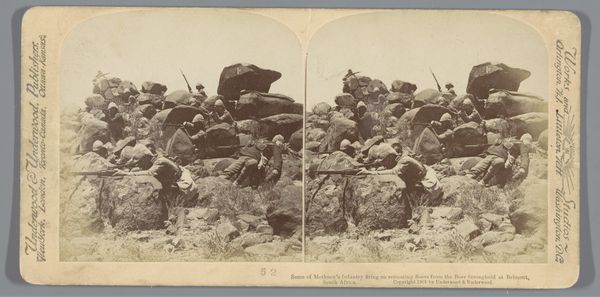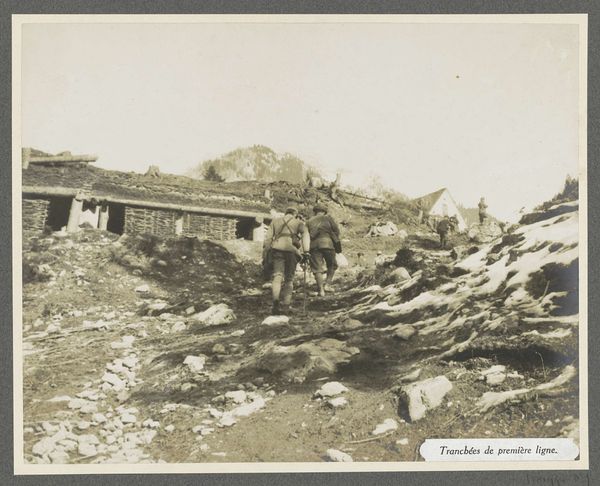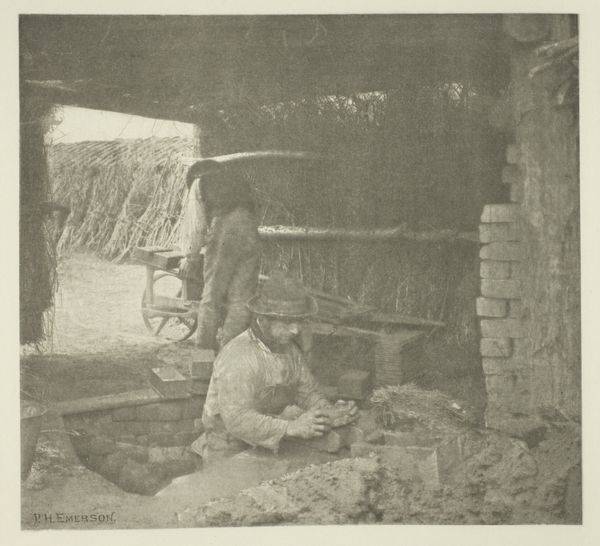
De veldslag van Atrecht (9 Mei tot Juni) was uiterst bloedig voor de Duitschers. (...) Men ziet hier een episode van de verovering van Neuville (...) 1915
0:00
0:00
print, photography, gelatin-silver-print
# print
#
war
#
landscape
#
photography
#
gelatin-silver-print
#
history-painting
#
modernism
#
realism
Dimensions: height 140 mm, width 90 mm
Copyright: Rijks Museum: Open Domain
Curator: This gelatin-silver print, made in 1915, is attributed to the collective, Sémaphore, and is titled, "De veldslag van Atrecht (9 Mei tot Juni) was uiterst bloedig voor de Duitschers. (...) Men ziet hier een episode van de verovering van Neuville (...)." Editor: It evokes a feeling of grim inevitability, a haunting glimpse into a recent history marked by shadows. The landscape itself seems to mourn alongside the fallen. Curator: I agree, and that sensibility derives, I think, in part from the strong diagonal lines that bisect the composition: the collapsed rooftop drawing the eye downwards to the fallen figure. Editor: Absolutely. The stark contrast between the stark white coats of the soldiers advancing and the lifeless form on the ground only accentuates this. White as a symbol of surrender turned perversely into uniforms advances over death; an upsetting commentary. Curator: Indeed. But even the material choices of gelatin and silver add another textural layer, lending a cool detachment to the image while subtly activating that cultural understanding of silver as symbolic of death, of ending. The light itself becomes funereal. Editor: Right, it’s that association of silver with mourning. Also, the repeating motifs of the photograph amplify that theme; we have not just a single death but a larger pattern, as well: of war as an engine of loss. I detect an appeal here to the viewer, not to remember names necessarily, but to contemplate all names now lost to memory. Curator: Yes. And that semiotic register is strengthened by the fact the photo seems to capture that transitional period in visual culture. Still evoking echoes of earlier history painting while verging, almost imperceptibly, into a crisper, more brutal modernism. The soldiers here seem less valiant actors than mechanical instruments in the grip of larger historical forces. Editor: Seeing this photograph gives us the occasion, perhaps, to reflect upon history's symbolic potency; its recurring visuals as much as any objective accounting of specific wars. Curator: Yes. And it is that layering of both formalism and content that grants this particular work its staying power, that continues to render its grim visage, in a word, timeless.
Comments
No comments
Be the first to comment and join the conversation on the ultimate creative platform.
